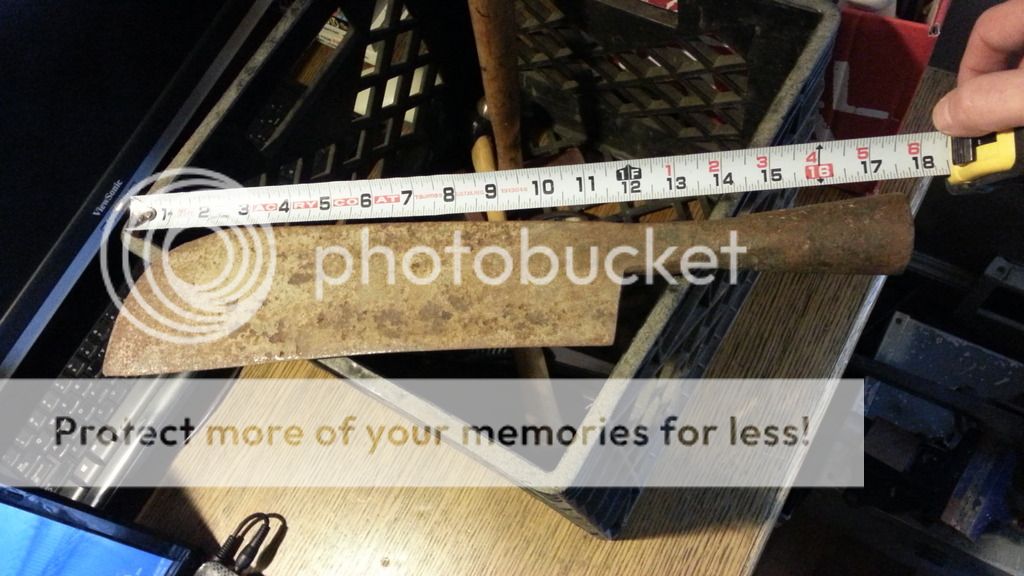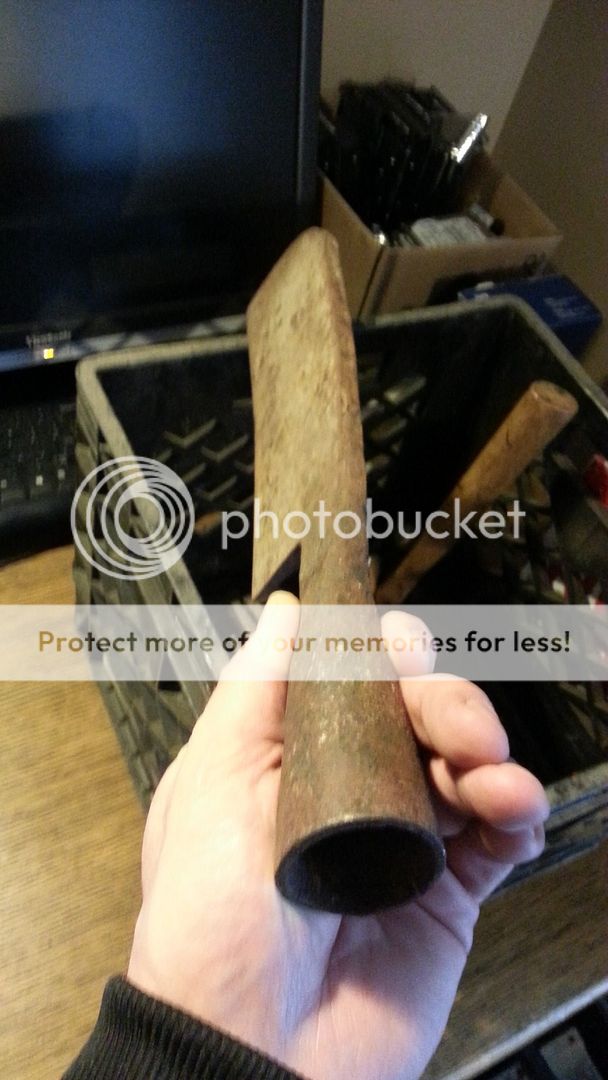- Joined
- Sep 3, 2014
- Messages
- 3,741
I picked this up because it is cool, but am unsure of it's untended purpose. It is old and hand made, profiled like a froe but taller and has the handle aligned the wrong way for that. It weighs 3.5lb and is built too heavily to be like a machete. It is 17" long with a 12" cutting edge and is made for a socket handle. That is all that I can tell you.





